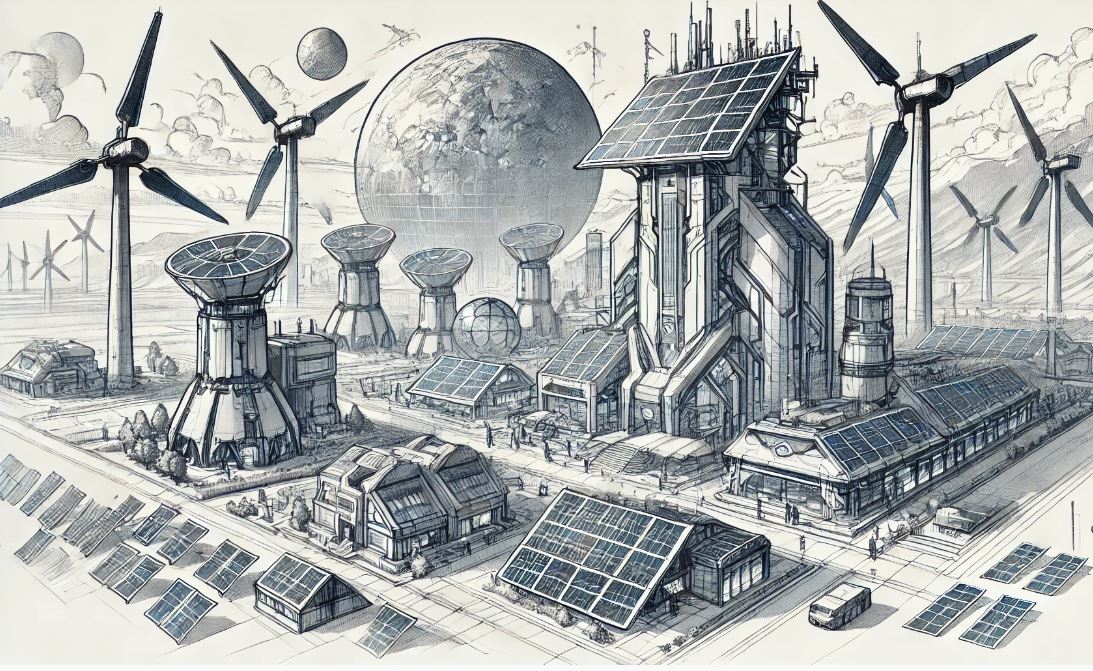Building and Deed System

In SnapCats, players can construct and customize various buildings using a deed system, gather resources, and manage energy through sustainable methods such as solar, wind, and nuclear power. The building system is designed to support player communities, crafting, and exploration in a futuristic, sci-fi world.
Types of Buildings
-
Player Homes
- Modular Living Unit: A compact dwelling for players, offering personal storage and basic crafting stations. Suitable for early-stage players or those who prefer a minimalist setup.
- Advanced Quarters: A more expansive home with multiple rooms for crafting, storage, and tech upgrades. Includes options to personalize the interior and exterior with different designs and materials.
- Eco-Housing: A sustainable living space that integrates solar panels and wind turbines to generate power, making it entirely self-sufficient.
-
Crafting and Research Centers
- Tech Workshop: A building dedicated to crafting items like weapons, armor, and advanced gear. The workshop is equipped with crafting terminals and blueprint stations, where players can create and upgrade their items.
- Resource Refinery: A facility where raw materials (gathered from harvesters) are processed into usable components. The refinery is essential for crafting high-end gear and tech modules.
- Research Lab: A high-tech facility used for researching new technologies, crafting blueprints, and developing energy solutions. The lab is powered by clean energy sources like solar or wind to keep operations sustainable.
-
Resource Harvesters
- Solar Energy Harvester: A building equipped with advanced solar panels that generate clean energy. Players can place these harvesters in areas with abundant sunlight to power nearby buildings or store energy for future use.
- Wind Turbine: A large wind-powered structure that generates energy for the player’s buildings. It’s ideal for areas with strong wind currents and provides a steady supply of power for crafting or research.
- Nuclear Power Plant: A high-capacity power source for players managing larger bases or cities. While it generates massive amounts of energy, it also requires careful maintenance and resource management to keep running efficiently.
-
Commercial Buildings
- Marketplace: A trading hub where players can buy, sell, and trade items, resources, and blueprints. The marketplace is a vital part of the player economy, allowing players to access rare materials or equipment.
- Guild Hall: A communal space for guild members to gather, plan missions, and share resources. Guild Halls can be upgraded with crafting stations, meeting rooms, and storage areas.
- Auction House: A larger-scale marketplace where players can auction rare items or resources. The Auction House is also a social hub where players can meet, negotiate trades, and collaborate on projects.
-
Public Spaces
- Cantina or Lounge: A social space where players can relax, meet up with others, and participate in events. Cantinas can also host live performances or player-organized activities.
- Community Center: A public building where players can gather for faction meetings, events, or group planning. The center can be customized with decor and functional equipment based on player preferences.
-
Energy Facilities
- Solar Farm: A large facility dedicated to generating energy through solar panels. Players can install multiple solar panels to power their entire base, especially in areas with abundant sunlight.
- Wind Farm: A facility that consists of multiple wind turbines, designed to capture wind energy and distribute it to nearby buildings or store it in energy banks.
- Nuclear Reactor: A highly efficient energy source that powers large bases or cities. Though it provides ample power, it requires advanced resources to build and regular maintenance to prevent malfunctions.
-
Agricultural and Resource Buildings
- Hydroponic Farm: A high-tech farming facility where players can grow food or rare plants using water-based farming techniques. The farm can be powered by solar or wind energy, ensuring self-sufficiency.
- Resource Harvester (Basic): A structure that extracts raw materials like metals and minerals from the environment. These materials are then used for crafting or selling on the marketplace.
- Advanced Resource Extractor: A larger version of the harvester, capable of extracting rare resources more efficiently. This building can be upgraded with solar or wind energy modules to keep it running sustainably.
Power Generation Methods
In SnapCats, players can generate power through sustainable means, ensuring that their buildings and cities run efficiently while minimizing environmental impact. Players can choose between solar, wind, and nuclear energy, depending on their needs and the size of their operations.
-
Solar Power
- Solar panels are placed on top of buildings or as standalone units to capture sunlight and convert it into energy.
- Solar power is ideal for regions with long days or abundant sunlight and provides a consistent, low-maintenance energy source.
- Buildings like the Solar Farm and Eco-Housing rely heavily on solar power for self-sufficiency.
-
Wind Power
- Wind turbines can be installed in areas with strong wind currents to generate energy.
- Wind power provides a renewable and sustainable energy source, especially in mountainous or coastal regions.
- The Wind Farm and Wind Turbine buildings are essential for capturing wind energy and distributing it to other buildings.
-
Nuclear Power
- Nuclear reactors provide a large-scale energy solution for players managing extensive bases or cities.
- While nuclear power offers significant energy output, it requires advanced resources and regular maintenance.
- The Nuclear Reactor and Nuclear Power Plant buildings are the highest-capacity energy sources but come with increased risk and responsibility.
Building Customization and Upgrades
- Interior Customization: Players can personalize their homes, crafting centers, or public spaces with furniture, decorations, and tech modules. Each building can be tailored to fit the player’s style and needs.
- Functional Upgrades: Buildings can be upgraded with additional rooms, energy-saving modules, or expanded storage. For example, a Tech Workshop can be upgraded with more advanced crafting stations, and a Solar Farm can add more panels to increase energy output.
- Energy Management: Efficient energy management is crucial in SnapCats. Players must balance their power needs across buildings and ensure that energy is distributed effectively between solar, wind, and nuclear sources.
Harvesting Resources
In SnapCats, resource gathering plays a key role in building, crafting, and expanding player-run operations.
- Placing Harvesters: Players can place harvesters on resource-rich areas to extract raw materials like metals, minerals, and organic compounds. These resources are crucial for crafting and upgrading buildings.
- Upgrading Harvesters: Basic harvesters can be upgraded to more advanced versions that collect resources more efficiently or extract rarer materials.
- Energy-Powered Harvesters: Harvesters can be powered by solar or wind energy, ensuring that they run without constant player intervention.
Snapcat Token is at the forefront of the Web3 revolution, offering an innovative platform where gaming and digital collectibles merge seamlessly. Our token facilitates a vibrant ecosystem driven by player engagement and community growth, ensuring a dynamic and rewarding experience. Embrace the future of blockchain with Snapcat, where every transaction propels us forward.
Revolutionizing Web3 Gaming and NFTs
©2024 – Snapcats LLC. All Rights Reserved.

